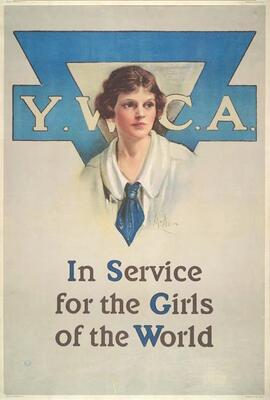The object of the political party as reported at its founding meeting in Calgary in 1932 was "the federation [joining together] of organizations whose purpose is the establishment in Canada of a co-operative commonwealth, in which the basic principle of regulating production, distribution and exchange will be the supplying of human needs instead of the making of profit."
The Co-operative Commonwealth Federation (CCF; French: Fédération du Commonwealth Coopératif, FCC); from 1955 the Social Democratic Party of Canada (French: Parti social démocratique du Canada), was a federal democratic socialist and social-democratic political party in Canada. The CCF was founded in 1932 in Calgary, Alberta, by a number of socialist, agrarian, co-operative, and labour groups, and the League for Social Reconstruction. In 1944, the CCF formed one of the first social-democratic governments in North America when it was elected to form the provincial government in Saskatchewan.
The full, but little used, name of the party was Co-operative Commonwealth Federation (Farmer-Labour-Socialist).
In 1961, the CCF was succeeded by the New Democratic Party (NDP).
The Co-operative Commonwealth Federation (CCF) had a significant impact on Saskatchewan in the 20th century. Its history can be divided into three parts: the Great Depression years of the 1930s; the Douglas era during the 1940s and 1950s; and the move into the New Democratic Party (NDP) in the early 1960s. The Saskatchewan CCF was born amidst the devastation of the Great Depression. In 1932 the United Farmers of Canada, Saskatchewan Section (UFC) and the provincial Independent Labour party (ILP) met jointly in Saskatchewan and created the Farmer-Labour party. Its program emphasized protection against foreclosures, socialization of finance, and a public health system. In 1934 it became a part of the newly formed national CCF and was now the Saskatchewan CCF. The party was unsuccessful in the 1934 and 1938 provincial elections. During this formative stage, the CCF was primarily a radical agrarian response to an economic crisis that left an indelible imprint on the province. M.J. Coldwell, a labour spokesman, was the party's first provincial Leader, but the UFC was the focus of party activity. George Williams, Frank Eliason and Louise Lucas played especially critical roles; in 1935 Williams became CCF leader.
Support for the CCF in Saskatchewan increased after 1940. A comprehensive policy was formulated, and party organization was strengthened. The abilities of the new leader, T.C. Douglas, became especially apparent in the 1944 election as he led the CCF to a landslide win. Four more electoral victories followed, in 1948, 1952, 1956 and 1960. Under Douglas the CCF faced the realities of power, and moved beyond the combination of despair and idealism which had given rise to the party in the 1930s. Both public and private enterprise played important roles as resources were developed, electricity brought to farms, and a system of social services established. CCF leaders such as the provincial treasurer, C.M. Fines, typified the Douglas era, as did a group of indispensable public servants including A.W. Johnson, Tommy Shoyama, and Allan Blakeney. The Douglas years drew to a close with plans to implement universal public health insurance in Saskatchewan.
The national CCF became a part of the New Democratic Party in 1961. Premier Douglas left Saskatchewan to lead the new party. Although the Saskatchewan CCF supported the move into the NDP, it did so with reluctance and hesitancy; to preserve its identity it temporarily maintained the CCF name, and candidates ran under that label in the 1964 provincial election. The party, led by Woodrow Lloyd, was defeated, and the CCF era in Saskatchewan thus ended. However, the party was not gone: the Saskatchewan NDP, in all but name, was the old CCF. Also, during the next generation many would identify the NDP with Canadian Medicare, a program conceived and delivered by the Saskatchewan CCF.
George Hoffman


